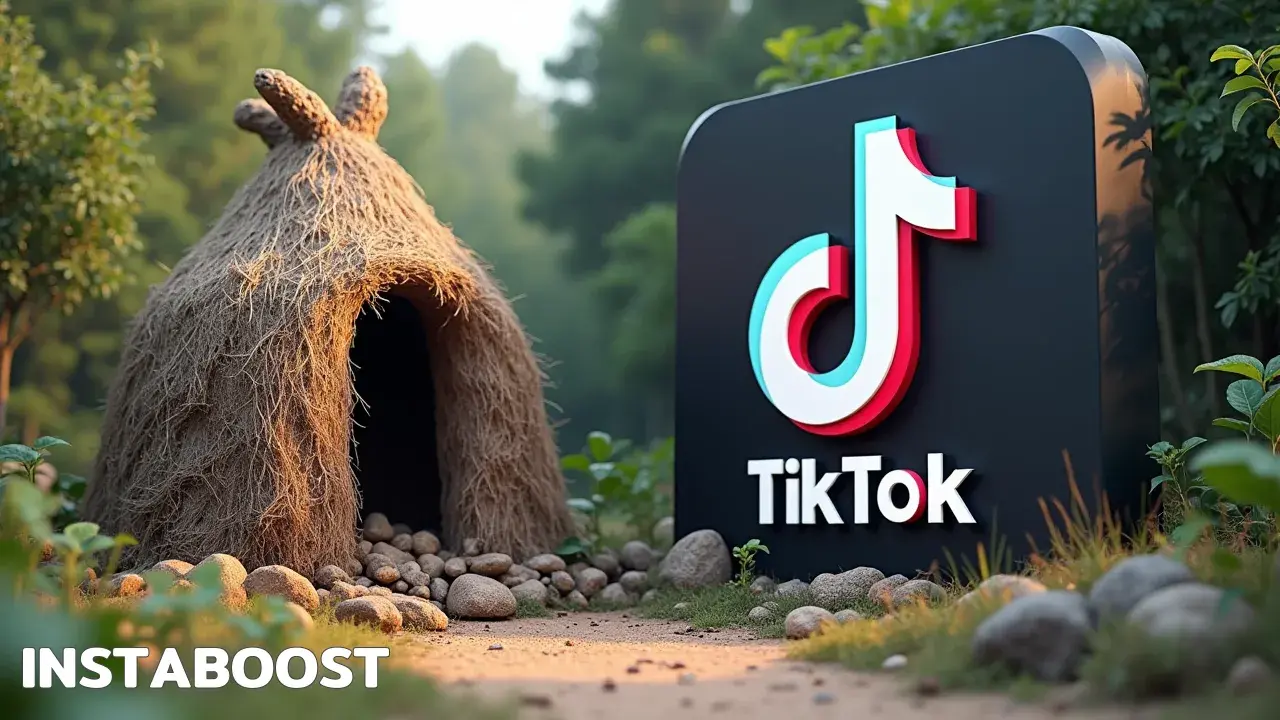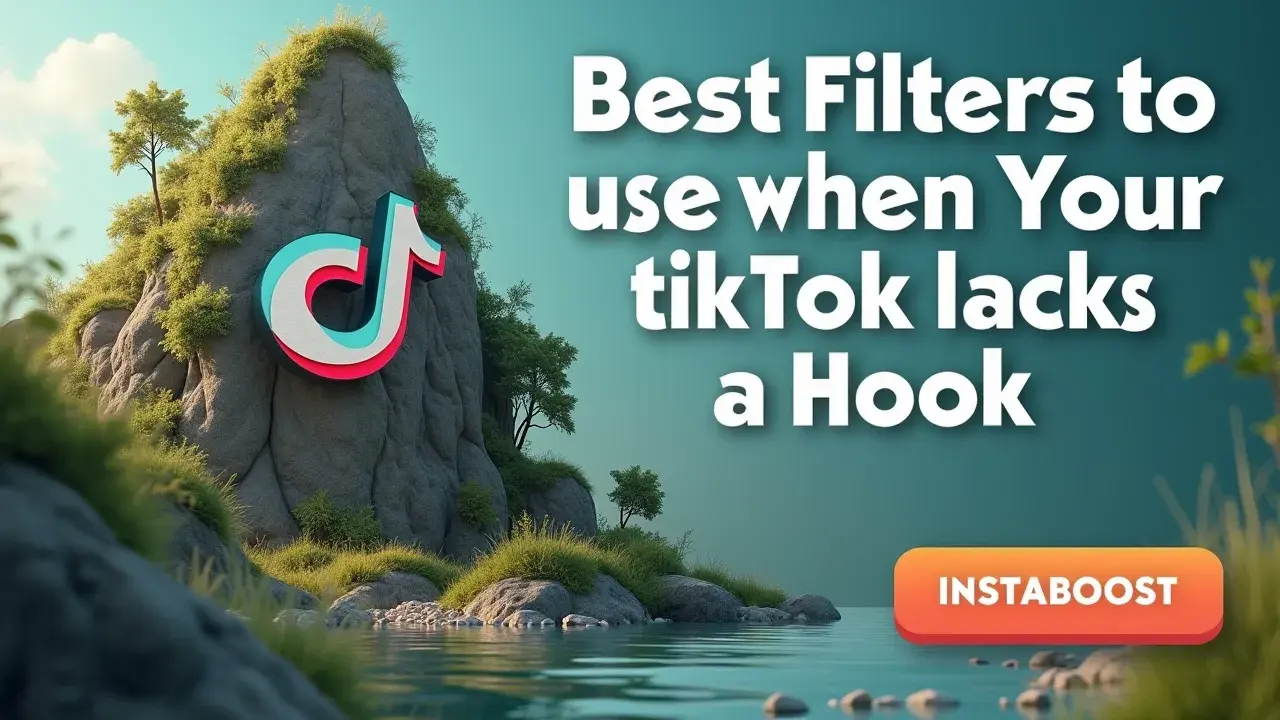What Filters Help When Your TikTok Lacks a Hook?
Visual effects can create instant curiosity and improve watch time when an opening hook is weak. Bold color grading, subtle face smoothing, or dynamic transitions can draw eyes in crowded feeds by adding contrast and motion. Trending AR filters also signal familiarity, but overuse can distract if they clash with the content’s theme. Choose effects that highlight the subject and match the vibe, then test variations to see which boosts retention and engagement.
Why Filters Matter More Than You Think
When you’re making a TikTok, the first few seconds matter more than you’d think. If a video doesn’t already have something to pull people in, filters can actually do a lot of the heavy lifting. I used to think filters were mainly for smoothing out skin or brightening colors, but on TikTok, they work more like a nudge – the right filter can guide someone’s attention, set a specific tone, or just make a regular clip feel a bit more intentional.
Even a small adjustment, like warming up the colors or adding a bit of blur to the background, can make a difference when people are flicking past dozens of videos in a row. Most viewers probably aren’t aware of it, but that first impression, before you even start talking, is shaped a lot by how the video looks. I’ve noticed the people who really get it treat filters as one of the first things to think about, not as an afterthought.
Sometimes switching to a trending effect or using a subtle edit is enough to make people stop scrolling. Honestly, it’s funny how something as simple as the right filter can help you get noticed on TikTok without changing much else about your content.
So if you’re finding it hard to get people to watch your videos all the way through, it might be worth looking at filters with fresh eyes. It doesn’t have to be a huge change, but paying attention to the way something looks on screen can help, even if nothing else about the video is different.
So if you’re finding it hard to get people to watch your videos all the way through, it might be worth looking at filters with fresh eyes. It doesn’t have to be a huge change, but paying attention to the way something looks on screen can help, even if nothing else about the video is different.

Why Even Pros Underestimate the Power of Filters
A lot of marketers, even the experienced ones, still fall into thinking that if their message or product is strong enough, the way it looks or feels – like which TikTok filter they use – won’t have much impact. But when you actually spend a little time on the “For You” page, it’s clear that strong ideas can blend in and get ignored if the visuals don’t immediately stand out. This isn’t really about making things look fancy; it’s more about how people’s attention works. TikTok’s algorithm seems to notice when a video is visually different or interesting, sometimes because of something as simple as a filter.
The right filter can set a mood, bring out energy, or make the place in the video feel clear from the first second – often before anyone even looks at a caption or notices the audio. It’s not only about smoothing things out or making the video sharper. Sometimes a filter makes a detail pop or shifts the color in a way that gets someone to stop for a second instead of scrolling by. Even people who do this for a living sometimes don’t pay much attention to filters, but if you look at the numbers, the choice can matter almost as much as editing or what you say – kind of like the way small tweaks can amplify your TikTok profile without you really noticing at first. So if your TikTok isn’t sticking, you might want to spend a few minutes trying out different filters, even on the same clip, and just watch what changes. Sometimes that’s the thing that makes someone pause and actually watch instead of moving on.
Lead With Intention: Using Filters Strategically
For me, this isn’t really about trying to keep up with trends. It’s more about what actually gets people to stop and watch. On TikTok, if the start of your video doesn’t catch someone’s attention, sometimes a filter can do that job quietly – helping people focus for a second before they decide to move on. Instead of reaching for the brightest or most popular effect, I think of filters as tools that shape how people see what I’m sharing. Like, if I use the “Portrait” filter, the background softens and all the attention goes to whoever’s talking or showing something – it’s almost like the app is helping guide the viewer’s eyes without any fuss.
Or if I’m filming late in the evening, that blue-ish “Vibe” filter just matches the mood and makes storytime feel a bit more relaxed, like hanging out with friends after a long day. I usually try to ask myself what I want people to notice right away – should it feel casual, focused, a little nostalgic? Even small changes, like bumping up the contrast or adding some grain, can make a regular video feel more put-together, like you actually thought about what you were posting.
Most people I know who see steady views don’t leave filters up to luck – they treat them like they’d treat lighting or sound, just another part of getting the video right. The odd thing is, sometimes things like high-quality likes for TikTok can subtly point out what’s resonating most with viewers, almost like a feedback loop for what’s working. It’s not about fitting in; it’s about making sure your stuff feels real enough for someone to stick around. If I’m not sure which direction to go, I’ll sometimes put up two versions – one with a filter, one without – and check which one holds people’s attention a bit longer. You start to notice patterns after a while.
Rethinking the “No Gimmicks” Myth
This isn’t really about fear – it’s about remembering what you’ve seen before. If you’re hesitating to use TikTok filters when your video doesn’t start with a big attention-grabber, it might be because you recall brands that went overboard with flashy effects, making things look forced or out of touch. But filters themselves aren’t the issue.
They’re tools, sort of like how a cook decides between fresh herbs or a squeeze of lemon before serving a meal. What actually seems to slow people down is this lingering belief that “good content” should be enough on its own, that it doesn’t need anything extra to help it along. That might have worked when everything on TikTok still felt new, but if you open the app now and scroll for a bit, it’s pretty clear that small details – like a certain color or a subtle light effect – can be what makes you pause for a second.
If your video doesn’t have a strong hook right away, a filter can give it a bit more time to reach someone. Using one isn’t about covering up flaws or pretending something’s more interesting than it is – it’s more about being aware of what gets noticed when there’s so much happening on screen. The creators who seem to do best, and brands like INSTABOOST, pay attention to which filters line up with what they want to say, and which ones make their videos feel like their own. Sometimes, even just a tweak can make the difference between someone scrolling past and that brief moment of interest, especially when you consider how subtle choices have been shown to TikTok video performance boost time and again. So, filters don’t have to be dismissed as some kind of gimmick. They can be a small, thoughtful part of how a video comes together, something you use on purpose, even if it’s hardly noticeable at first.
Break, Reboot, Repeat: Treating Filters as Creative Tools
Sometimes, if you want to get better at TikTok, you have to let go of what’s been working and try rebuilding with a bit more intention. If your videos are starting to feel flat at the beginning, it doesn’t help much to throw on a filter just to distract from that. It might be worth thinking of filters as small tests – a way to shift the color or brightness, add a slight effect, and see if it changes how someone stops and looks at what you’ve made. Most of these changes won’t be game-changers, and that’s part of the point; it pushes you to reconsider how you usually shoot or edit, to see what happens if you do something a little different, even if it means the result isn’t quite as smooth as you’d like.
Adding a split-tone filter to a straightforward caption, using some grain to make a product look less polished, or putting a blue tint over a clip to change the mood – these are all simple ways to nudge people to see your video with fresh eyes. Each time you adjust something, it’s like you’re asking yourself, “How could this feel different if I started over?” The TikTok videos that tend to stick with people aren’t the ones using whatever filter is popular that week, but the ones where the creator has made a clear choice about how they want things to look and feel. When you treat filters as a tool, not just a way to decorate, you start to notice which tweaks actually help people stay with your video. Even larger brands like INSTABOOST have figured out that experimenting with filters makes their videos feel a bit more real, which seems to keep viewers around longer – and it might even increase your TikTok reposts in the process.















